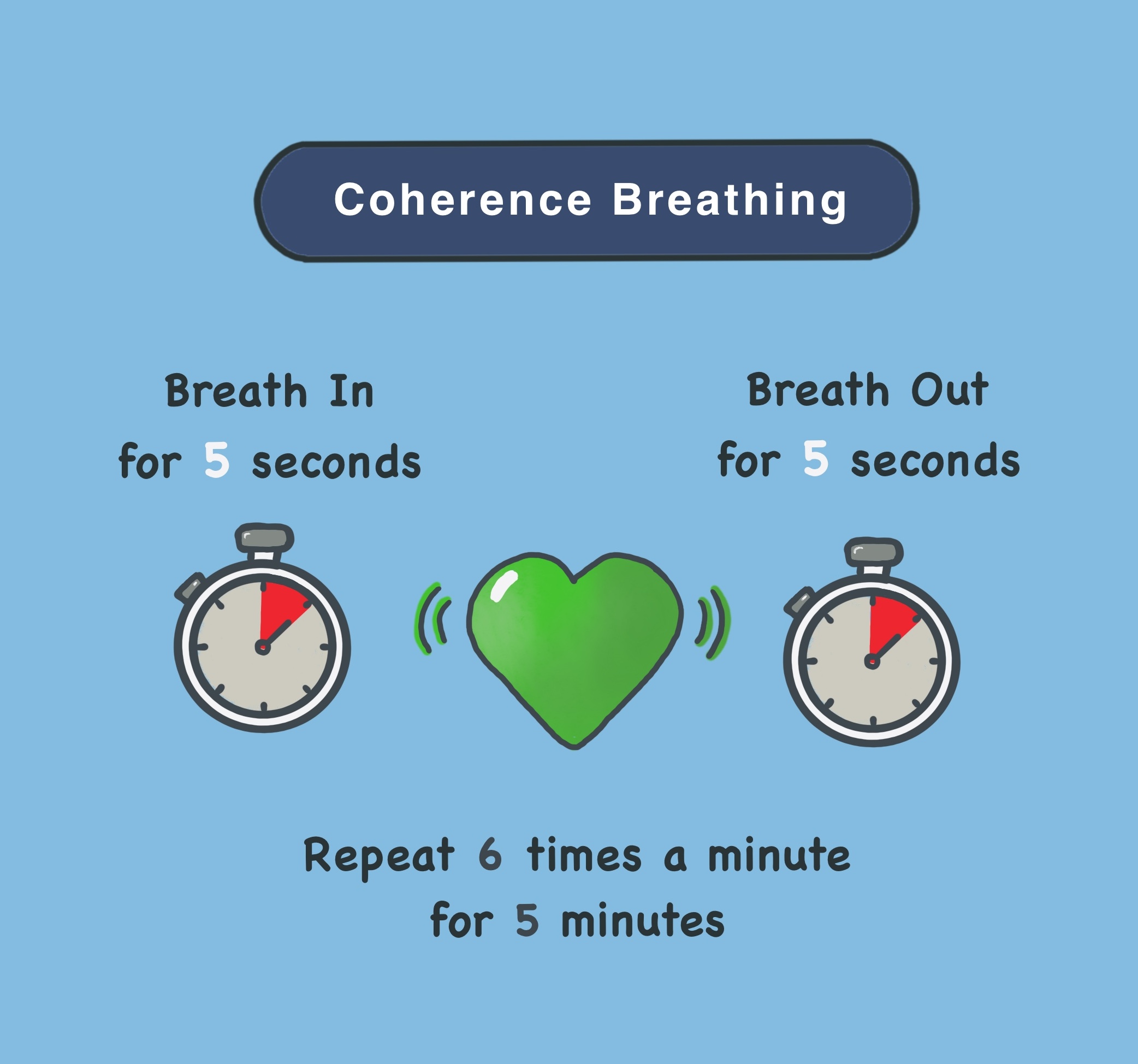Coherence breathing for better health

The breath is the guardian to the heart..."
- Dan Brulé
Introduction
Coherence Breathing is a technique that synchronises heart rate, breathing, and blood pressure to help you achieve a state of calm and balance.
Coherence breathing involves keeping a steady, rhythmic pattern of six breaths per minute. Why six? According to Dr David O'Hare, author of Heart coherence 365: A guide to long lasting heart coherence, heart coherence is at its maximum when the resonance frequency of six respiratory cycles per minute is attained.
Heart coherence is a state in which your heart, mind, and emotions are synchronised and balanced. This state will typically bring you feelings of well-being, relaxation, and improved mental alertness.
Great to use to feel better if you are stressed, to help you focus, or to prepare for a meeting or a difficult conversation.
If you are new to the technique, you should start practising for five minutes daily. Ideally, it would help if you did it as early as possible after you get up. It's like building a muscle - the more you use it, the easier it is to feel the benefits. The key is to try and practice every day, eventually repeating the practice three times a day—at least four hours apart for maximum benefit.

How to do coherence breathing
1. Find a Comfortable Position: Sit or lie down in a comfortable position with your back straight and shoulders relaxed.
2. Inhale Slowly: Breathe deeply through your nose for about 5 seconds. Use abdominal breathing, which is to say, breathe deeply into your lower abdomen - but don't force it; you want to stay relaxed as you do the technique.
3. Exhale Slowly: Breathe out slowly through your nose or mouth for about 5 seconds. If breathing out through your mouth, breathe through your mouth as if trying to blow out a candle on a birthday cake without disturbing the icing sugar.
4. Maintain the Rhythm: Continue this pattern of slow, deep breaths, aiming for 6 breaths per minute. 5 seconds for the in-breath, 5 seconds for the out-breath.
5. Focus on Breathing: Concentrate on your breathing. Treat it as a mindfulness exercise—be present with your breath and let go of distracting thoughts.
6. Duration: Practice this for at least 5 minutes daily to start, gradually increasing the number of times to 3 times a day as you become more comfortable with the technique.
Regularly practising coherent breathing can enhance your well-being, improve focus, and better manage stress.